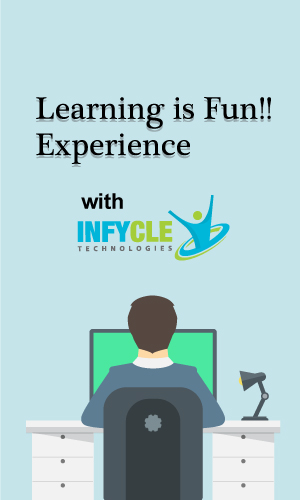Internet of Things Training in Chennai
The IoT is defined as a network of physical objects that are embedded with electronics that enable the objects to provide greater value and service. Each “thing,” uniquely identifiable by its embedded computing system, offers advanced device, system, and service connectivity, stretching beyond machine-to-machine communications and covering domains and applications.
It is an system of interrelated computing devices, mechanical and digital machines, objects, animals or people that are provided with unique identifiers ( UIDs ) and the ability to transfer data through a network without requiring man-to-man or man-to-machine interaction.
The IoT creates opportunities for more direct integration of the physical world into computer-based systems, resulting in efficiency improvements, economic benefits, and reduced human exertions.The number of IoT devices increased 31% year-over-year to 8.4 billion in the year 2017 and it is estimated that there will be 30 billion devices by 2020.
IOT has extended its applications as following
Consumer applications
IoT devices are created for consumer use, including connected vehicles, home automation, wearable technology(Internet wearable things), connected health, and appliances with remote monitoring capabilities.
Commercial applications
It includes Medical and healthcare, Transportation, Vehicle communication and Vehicle to everything communication, Building and home automation.
Industrial Applications
In this industry based application IOT plays its role in Manufacturing(rms) for Intelligent maintenance and Agriculture for collection of data on temperature, rainfall, humidity, windspeed, pest infestation and soil content.
Infra structure applications
Monitoring and controlling of urban and rural infrastructures like bridges, railways, on and off-shore wind farms is the application of IOT. It point its benefits on cost saving, time reduction, better quality workday, paperless workflow and increase in productivity. Some examples are: Metropolitan scale deployments, Energy management, Environmental monitoring and Living Lab.
Software Developers who are venturing into IoT space
Solution Architects
Technical Architects
Students who seek IoT knowledge
Business Executives and Managers who want to understand the essentials of IoT
IoT Course Content
Key features
Advantages
Disadvantages
IoT –sensors
Wearable electronics
Standard devices
Electronic signals
General purpose input and output
PWM
ADC
Microcontrollers and computers
Potentiometer
Light sensor
Temperature sensor
Distance
Gas sensor
Digital sensor
Led,7 segment, lcd
Hardware requirement
Internet access through Ethernet
IoT remote execution
Engineering, industries and infrastructure
Government and safety
Home and safety
Health and medicine
Thingworx
IoT eclipse
contiki
security
identity protection
liability
-
Explain IoT in simple terms.
IOT stands for Internet of Things. It is a network in which various Things can communicate with each other using a Network as a means of communication between them. Usually, this Network will be an internet.
-
What role does the network play in the Internet of Everything?
The network plays provides an intelligent, manageable, secure infrastructure that can scale to support billions of context-aware devices.
-
What are the main parts of IoT systems?
IoT system consists of three main parts: Sensors, Network connectivity, Data storage applications
-
Explain the IoT protocol stack.
• Sensing and information
• Network connectivity
• Information processing layer
• Application layer
-
What are the important components that exist in the Internet of Things?
• Hardware
• Software
• Verbal exchange infrastructure
-
What are security concerns related to IoT?
Data security and privacy are major concerns related to IoT. These devices are vulnerable to hacking and cloud endpoints could be used by hackers to attack servers.



Infycle Technologies
Let Profession Search You